#the original references vs the modern band
Text
Round 6 - FINALE
The winner takes all! Which piece of media deserves to be the Champion of 1997?

Revolutionary Girl Utena: If it cannot break its shell, the chick will die without ever being born. This sentiment, originally found in Hermann Hesse’s 1919 novel Demian, features during a repeated sequence in the 1997 anime Revolutionary Girl Utena. Hesse is far from the only reference to philosophical, surrealist, or heavily symbolic text in the show, which trades in visual metaphor and multi-layered subtext. Revolutionary Girl Utena follows the story of Utena Tenjou, a young orphan who aspires to princehood-- challenging or outright circumventing the place of gender in that aspiration-- and is entangled in a series of duels centered around a girl named Anthy Himemiya. Written by Kunihiko Ikuhara, Chiho Saito, and Yōji Enokido (known collectively as Be-Papas) and soundtracked by J.A. Seazer and Shinkichi Mitsumune, the show has an instantly recognizable style, combining lush fairytale visuals and French-inspired architecture with a choir that functions as a sort of Greek chorus to the internal worlds externalized in combat. Utena is a story about many things, arguably all things, taking a surgical scalpel to adolescence and using the flat of the blade as a paintbrush, leaving a deeply human, visceral work of art in its wake. It has been massively influential on feminist, queer & sapphic, and otherwise gender-deconstructive or gender-subversive modern media. Smash the world's shell! For the revolution of the world!
Radiohead's OK Computer: I go forwards, you go backwards, and somewhere we will meet. By the middle of the decade, Radiohead was weary of the ubiquity of their 1993 hit Creep; although the record that followed it (The Bends) was a lusher, more evolved album than their first, it had failed to produce a distinctive enough image for the band to undo what Creep had done. The song threatened to define the band entirely to those outside their devoted following. In 1997 the band swung for the fences with the haunting, abstract OK Computer. It was a move their label cast immense doubt on at the time, and its success then and now would cement Thom Yorke and his bandmates as soothsayers of a sort, draped not in bohemian silk robes but in white hospital sheets. It's an album that speaks to the future with dread more than wonder, that critics described as "nervous almost to the point of neurosis," but marries the uneasy experimental soundscapes with poetic, surrealist, and increasingly prophetic songwriting regarding the parallel lives we lead with technology. Featuring the singles Karma Police, Paranoid Android and No Surprises, OK Computer is hailed by many as the band's magnum opus: it's certified double Platinum in the US and five-times Platinum in the UK, and in 2014 it was included in the United States National Recording Registry as "culturally, historically, or aesthetically significant."
#revolutionary girl utena#shoujo kakumei utena#kunihiko ikuhara#radiohead#ok computer#thom yorke#1997
104 notes
·
View notes
Text
Jessicka vs Mark Ryden ft. Lynz: Friendships and Falling Out Part II
Hey, long time no post. So, a few years ago I made a post about the Jessicka and Lindsey Way fall out, and the role artist, Mark Ryden played in their friendship breakdown. Link here! Here’s a quick recap if you don’t feel like reading the full original 2018 post (although I recommend you do as I’ll be referring to a lot of it here):
Long before Jessicka (or anyone else) knew who Lynz Way was, she had struck up a friendship with pop surrealist, Mark Ryden. Ryden is a well-respected modern artist, perhaps one of his most famous works is the cover of Michael Jackson’s ‘Dangerous’ record released in 1991. Mark Ryden married fellow pop surrealist painter, Marion Peck in 2009. Ryden and Jessicka have known each other since at least 1999, when he created the album art for Jack Off Jill’s album, ‘Clear Hearts, Grey Flowers’ released in July 2000.
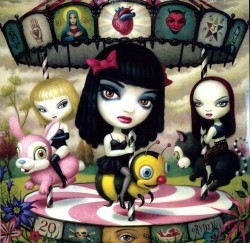
Mark Ryden even attended Jessicka and Christian Hejnal’s wedding in 2007. If you read the post linked above, you’ll see they had a well-established relationship before the Indian Bass Queen, Lindsey Way came on the scene.
At some point, Jessicka introduced Lindsey to the Ryden/Pecks which would later turn out to be one of the worst things she could’ve possibly done to herself. When the shit hit the fan, and the coven broke up, Ryden and Peck seemingly took Lindsey’s side. Ryden and Peck were happy to sell the Ways their home and even graced them some original artwork to adorn it.
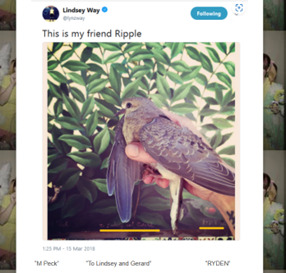
Why did Jessicka and Mark Ryden/Marion Peck fall out? Well, Jessicka obviously loves fighting on the internet and this sometimes spills into her personal life. Jessicka told a rando on the internet some details of previous coven shenanigans:


The important thing to note here is Chantal Claret convinced Jessicka to confront Marion Peck about rumors that Mark Ryden was in love with her. I kid you not, Chantal Claret (a grown woman and friend to Jessicka) convinced Jessicka (another grown, married woman) to tell Marion Peck (a friend of Jessicka’s, and a grown married woman) that her husband, Mark Ryden was in love with her, as in Jessicka. Like wtf? Why would anyone, ANYONE think that was a good idea? But apparently Jessicka did, and she confronted her. LOL, facepalm. “So Marion, I think your husband is in love with me”.
And why was Chantal even involved in this? Apparently, Chantal thought it would be a good idea for Jessicka to “clear the air” with the Ryden/Peck household about Mark’s unrequited love for Jessicka before they moved states. However, it was actually engineered by Chantal so that Jessicka looked crazy, the Ryden/Pecks would fall out with her, and the path would be clear for the Ways to buy Mark Ryden’s house as he would have been forced to choose a side in the coven wars. As far as I know, the Ways still live in the Ryden house to this day. Before Lindsey was chased off of twitter for being a racist who lies about being adopted and having an Indian Grandmother (honestly, wtf?!), Lindsey would showcase elements of the Ryden (now Way) house. I’m not saying that she did this to wind Jessicka up, but she totally did it to wind Jessicka up.

2023 update, Jessicka is still all cut up over Mark Ryden not being in love with her. July 15th, Jessicka decided to reveal more of what went down between her and Mark Ryden. Maybe Jessicka had too much wine or maybe she was reeling from this email Mark Ryden sent her.

Either way, she was attacking everyone and anyone connected to the drama on her personal accounts and her Jack Off Jill band accounts, which she TOTALLY does not run! 😉
Important takeways from this email sent by Mark Ryden to Jessicka:
· He seems to be comparing her to another woman. Lindsey? Marion?
· The woman Jessicka is being compared to is, according to Mark, “spiritually evolved, intellectually intelligent, and a magically gifted artist”. Looking closely, we can assume that this refers to Marion as plagiarizing art hardly makes you a “magically gifted artist” *cough* Lindsey *cough*
· “Intellectually intelligent” is like when you have to reach your word count on your assignment, and you add random words to pad it out. He may as well have said smart smart.
· From 2016 until now, we have not heard the Ryden/Peck side of the story. All we’ve had is Lindsey’s less than subtle hints at her living situation, and Jessicka’s sloppy reveals to strangers on the internet. Obviously, Mark has tried to deal with this in a dignified and private way. This email seems to be a long time coming, a breaking point. Even then, he probably didn’t expect Jessicka to share this to her followers on Twitter and Instagram.
· A friendship of 15 years ( as noted by Jessicka’s post above) between Mark Ryden and Jessicka works out about right for the time that Lindsey bought Ryden’s house in 2016.
· Mark nails Jessicka’s existence when he calls out her constant self promotion. See any website where she is mentioned (including Wikipedia). She is always the sole author and editor.
· The “ridiculous fantasies” probably refers to Mark being “in love” with Jessicka. Does anyone else think that maybe Jessicka was in love with him? I mean, her art is heavily influenced by his...
After the initial private email sharing, Jessicka went on a rampage:

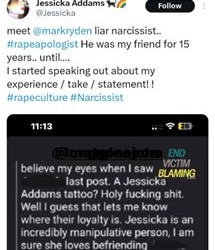
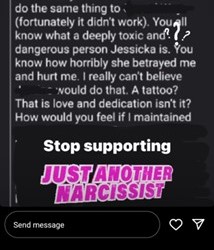



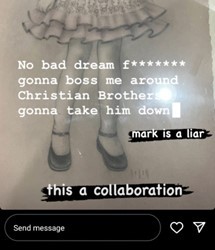

The picture above is the portrait Mark Ryden created for the Addams’ when Jessicka married Christian (Xtian). Notice the classy ‘Fuck @.MarkRyden’ in the corner? Never mind, Jessicka I’m sure you’ll be able to flog it on Ebay. Should be able to get some $$$ for the Ryden name alone, even if nobody knows who the people in the picture are.
After shitposting about Mark Ryden and Marion Peck, Jessicka then hopped onto her Jack Off Jill account and started to shitpost some more while arguing with a Lynz account. A highlight from this exchange is “she did not .. raie is sexual intercourses.. She played a shoe where two grifters claimed assault.” Um, ok, Jessicka. Also, Jessicka spilling the tea that Lindsey and Gerard were overcharged by Marion and Mark on the house LOL!

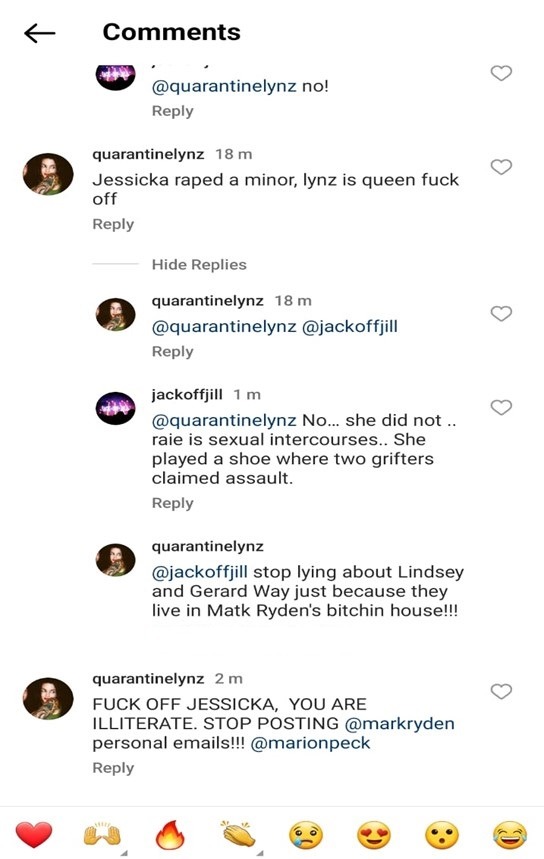
She then began commenting on a coven former friend, Jennifer Emil. Jennifer Emil was another major bully of MCR fans in the 2010/2011 twitter days. Oh dear, it’s a shame that all of these women eventually fell out.

So there you have it, a tale as old as time... Girl meets boy, girl claims to be boy’s muse, boy marries someone else, girl tells wife that boy is in love with her, they fall out, someone who claims to be adopted/Indian and a bass player and was previously girl’s friend buys boy’s house (at an overpriced rate) and girl goes on a rampage about it 7 years later.
#jessicka#lynz way#lindsey way#mark ryden#marion peck#christian adams#Christian Hejnal#msi#mindless self indulgence#chantal claret
54 notes
·
View notes
Text
The Best Games of 2004 | 20 Years Gone
A long time ago, in the late 00s, I REALLY wanted to be a Video Games Journalist. I was writing and podcasting for local tech website Techpedition and we even worked our way to E3 2009. I was able to parley my mask of legitimacy into getting a couple dozen free games from publishers, but was never able to break into the "business".
It's fine, I've still paid super close attention to the industry and have a handful of podcasts that I follow. One thing that I missed out on was creating the end-of-year best-of lists that have become so popular with pundits of video games. Partially because I didn't have a big enough outlet for it to matter, but more so because I didn't have the resources to play all the relevant games within their release years to render a judgment.
I typically get around to playing all the games I'm interested in, but it usually takes me about 2-5 years. It's partially a time thing but mostly a budget thing. So, what this is, is the beginning of my trip through the last 20 years of video games. I'll be creating a top 10 list for the last 15 years and going forward, I'll post a new list every year of the top 10 from 5 years ago. That is assuming I keep up with it, lol.
These will be written as if they were published the year of the list, so there will be no references to future games or better sequels, etc. Let's get started. Travel with me back to the year 2004 which, news flash, is now 20 years ago.
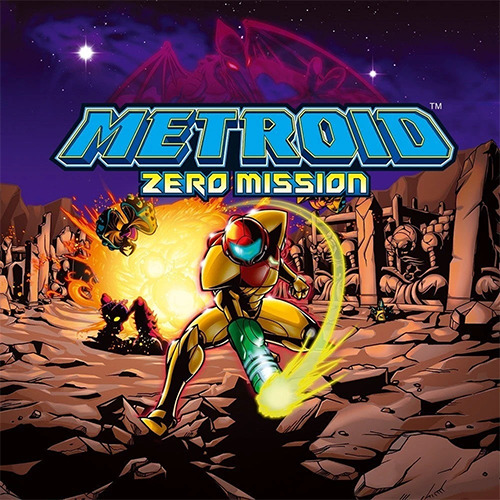
#10 - Metroid: Zero Mission
Not only is Zero Mission a solid remake of the classic original Metroid, but it succeeds at both making it feel modern and ultimately super-playable, which isn't something you can say about the old NES game.
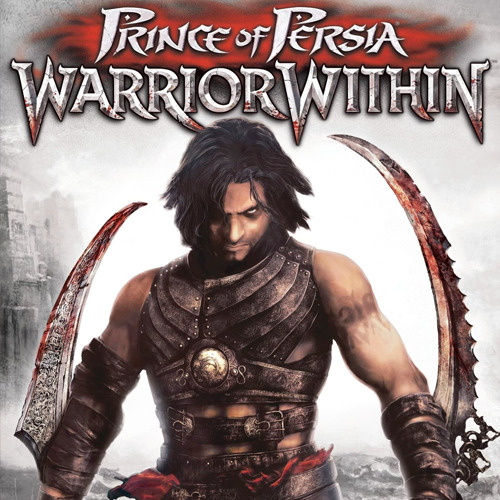
#9 - Prince of Persia: The Warrior Within
Much more agro than its predecessor, The Warrior Within builds on the foundation of the standout Sands of Time and smooths out a lot of the jagged edges, specifically in the combat department. Your mileage will likely be tied to how much you like Godsmack-itude, but POP2 is a great sequel.
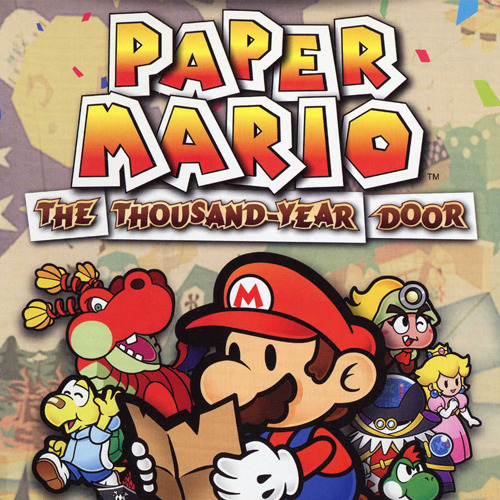
#8 - Paper Mario: The Thousand-Year Door
Paper Mario was a weird novelty and shadow follow-up to Super Mario RPG, but despite its clear creative direction, it was missing the character needed to fully succeed in the RPG space. The Thousand-Year Door has character in spades, and it will charm your staples off.

#7 - Sly 2: Band of Thieves
Making Sly Cooper into an open-world heist game took what was a decent platformer to the next level. Where the first game was a solid third place behind Ratchet and Clank and Jak and Daxter, Sly 2 makes the argument that it's a top-tier Sony series. Each mission matters and each of its characters is special.

#6 - Pikmin 2
Better than its predecessor in every way, Pikmin 2 shows the first game's primary game loop wasn't a fluke. The addition of Louie, as a second playable character who's played simultaneously with Olimar, adds a heightened level of stress, making each recovery mission a manic exercise in task prioritization.
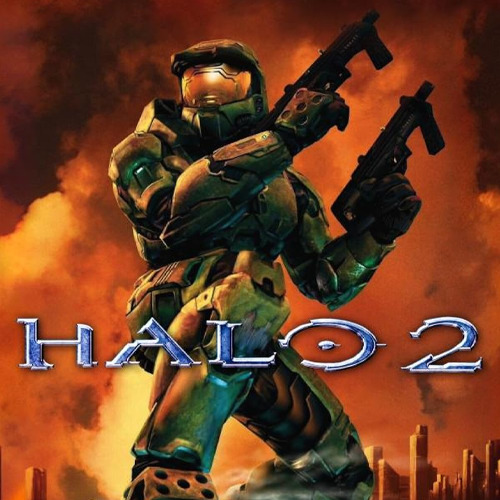
#5 - Halo 2
Is Halo 2 as impactful as Halo: Combat Evolved? Not really. The story isn't stellar, and the surprise Arbitor missions are little more than a pallet swap, but dropping the proven Halo action onto the Xbox Live service is game and industry-changing. I'm not a multiplayer guy, but I enjoyed the single player and I recognize how important Halo 2's success is to gaming as a whole.

#4 - Mario vs Donkey Kong
Donkey Kong '94, on the Game Boy, is secretly one of the best games of 1994. Mario vs. Donkey is Nintendo fleshing out that idea and making an addictive puzzle platformer. It starts out simple and sweet and ends hard and satisfying. Had this been the direction the Donkey Kong franchise went rather than Rare's DK Country series, SNES games may have had a very different trajectory.

#3 - Spider-Man 2
Licensed games always suck. Movie tie-in games always suck. Spider-Man 2 is an anomaly on top of an anomaly and it's 100% powered by the Swinging mechanic Treyarch built for the web-crawler. It feels SO good to swing around NYC that it's hard to believe Spider-Man as a character wasn't created specifically for video games.
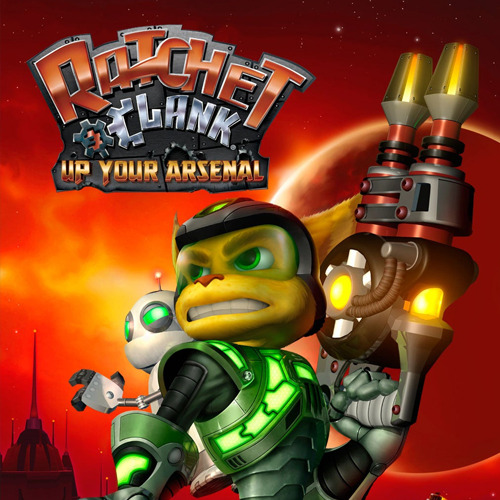
#2 - Ratchet & Clank: Up Your Arsenal
R&C3 is undoubtedly a great game, I'd even say damn near perfect, but its placement this high on the list may seem a bit weird. That's where my opinion comes in. I'm a huge 3D platformer fan, it's probably my favorite genre. With that factored in with the depth and polish of this shiny new Ratchet game, #2 on the list doesn't seem so outlandish.
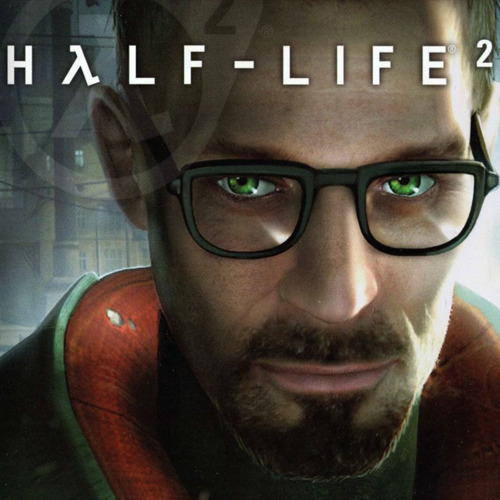
#1 - Half-Life 2
There's always talk of "importance" when it comes to works of art. Abbey Road is important, Michelangelo's David is important, and even A Clockwork Orange is important. Video Games, a medium that's still technically in its infancy, has only a handful of important titles. I'd say Half-Life 2 fits the bill. It's use of physics as a gaming mechanic is as technically impressive as it is clever. It's an FPS but it's not "just an FPS" and the mood and tone established throughout are as compelling as that of Blade Runner. Half-Life 2 is a stunner that will be studied for years.
Notable Omissions:
Grand Theft Auto: San Andreas - I've never liked GTA games. I respect their scope and ambition, but when it comes to playing them as games, GTA titles just stink.
Metal Gear Solid 3: Snake Eater - I've never gotten into the Metal Gear games and the more people yell at me to play them, the less I want to.
The Legend of Zelda: The Minish Cap - This one technically came out in North America in 2005. So, with me being from the US, It will hit next year's list.
Star Wars: Knights of the Old Republic II - The Sith Lords - I might end up playing this one eventually, but as of 2024 I have not.
What are your favorite video games from 2004?
See you next time. Cheers!
#Half Life#Half-Life 2#Sly Cooper#Ratchet and Clank#Mario vs donkey kong#spider-man 2#halo#paper mario#The Thousand Year Door#Prince of Persia Warrior Within#Metroid Zero Mission
3 notes
·
View notes
Text
Biolight, Kitsune, and the Sun(thoughts on the OW2 support heroes)
Okay. Rewatching the origin stories and cinematics of the OW2 exclusive heroes after playing them in game gave me a few thoughts.

Firstly, there's Niran aka Lifeweaver.
TL;DR: Niran was an incredibly smart rich kid with seemingly endless resources, a proclivity for disobedience, and distaste for perfection. Somehow, he basically made himself a god - being able to turn hardlight into real living matter - and is wanted by evil corporations so they can steal it. He also was Symmetra's roommate.
Pretty boy, super smart, super rich, loving parents, god powers.

Second, there's Kiriko.
TL;DR: Grew up with Hanzo and Genji (She should be in her late 20s-early 30s, if that's the case, but she's not) by her mother and grandmother, both of which having opposing views. Modernity vs Tradition. Instead of settling for one or the other, she blends the two in order to protect the people of Kanezaka from the Hashimoto mafia with her band of freedom fighters called the Yokai. She also has a fox spirit that makes her strong and keeps her young/healthy.
Pretty girl, natural leader, another ninja, loving parents, god powers.
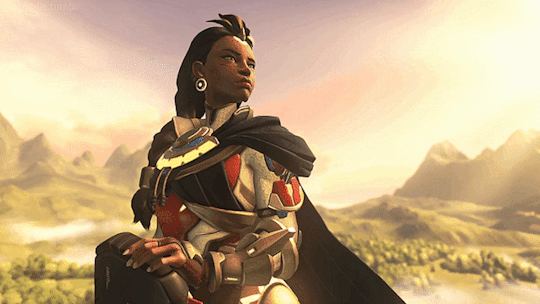
TL;DR: Illari was groomed to be the greatest of the Inti Warriors, powerful fighters who used the energy from the sun to bolster themselves. She was slated to join the Inti after receiving her solar threading, but a blast of power during the ceremony destroyed the chamber and everyone in it - everyone but her. Living with the guilt, she refuses anyone's sympathy and continues striving to earn forgiveness for a slight she doesn't truly know was her fault.
Trained warrior but also prodigy, riddled with survivors guilt, loving community, god powers.
There is only one of these 3 I have no complaints about. Can you guess who?
Now, we get to the fun part, aka the part where I complain. Take everything I say with a grain of salt; this is my personal opinion that I am entitled to.
Yes, there is nuance and hidden details about every hero in Overwatch. As someone who has been following the games lore since way before the content drought, I am well aware of the hidden details. But when it comes to some of the new OW2 heroes, particularly the supports, does it feel like the new heroes have been relegated to "Mary Sue" status to anyone else?
With the exception of Illari, who is probably the best written OW2 support (Note: I specify OW2 support because the OW1 supports have good lore), the other two supports feel like they were made to be perfect and plastic.
Kiriko "I have the power of god and anime on my side" Kamori and Niran "actually a god" PruksaManee have this way about them that feels... too smooth. Niran was naturally ridiculously smart and somehow figured out how to become a god, I guess? How else do you explain crafting organic life from... nothing, basically? In fact, he is probably the most egregious example of what I'm referring to.
As for Kiriko, she is shoehorned into the story of Hanzo and Genji, made out to be a troublemaking child turned responsible adult... like Genji, just without the attempted murder, and has access to a spirit. The spirit thing is connected to an even bigger issue with the lore regarding the Shimada's dragons. No one explained what they are, and the fact they resemble hardlight doesn't feel like a coincidence. Is it supposed to be magic or not? At least in the case of Zenyatta and Rammatra's Iris, that could be explained by means of code. The spirits, not so much. Anyways...
A common argument I get in favour of their characters is "you just want them to be gritty and edgy." They don't need grit to be good. Yes, almost every hero in Overwatch has some form of grit, but it's not totally necessary to make a good character. Take Brig for example.
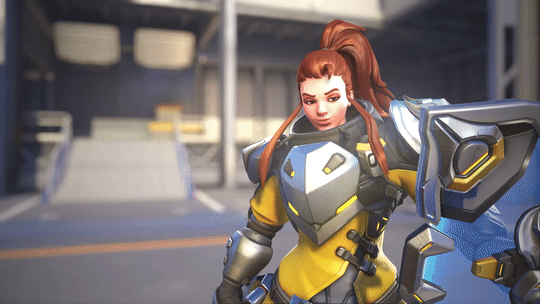
This is an example of a well written character with virtually no grit in her backstory. She's not a prodigy; she had to work hard for her skills. She has no god powers - no matter how busted she can be in game - and she didn't have to go through horrible traumas to get where she is. Yes, her father and godfather are both in the game and important to the lore, but that's not what makes her relevant and interesting. She feels distinct from them, and yet connects with them easily.
Her attitude isn't abrasive or annoying, her voicelines are consistent and fun ("Mace to the face!"), and she embodies her character type comfortably without being stereotypical. Brig feels her age, not overcompensating or a meme generator. And even beyond the squire archetype, she has shown a sensitive side in regards to art and poetry in the same way a tomboy would. While she is pretty (OW team make an ugly hero challenge: impossible), she isn't plastic like Lifeweaver and she doesn't look like a child the way Kiriko does. Brig is built like a young woman and probably one of the most realistic bodies in the game.
Brig is relatable.
Brig feels like me.
She is frankly a very well written character, both in and out of game, all while maintaining the futuristic fantasy of the OW2 world. You can make more characters like her without making them suffer some trauma or commit war crimes, Blizzard.
5 notes
·
View notes
Text
What is Moissanite? A Comprehensive Guide to Moissanite Jewelry
In the world of gemstones, moissanite has emerged as a captivating and sustainable alternative to traditional diamonds. This brilliant gemstone, first discovered in 1893 by Dr. Henri Moissan in a meteor crater, has gained immense popularity for its mesmerizing beauty, durability, and ethical appeal. If you’re curious about moissanite and its dazzling presence in the world of jewelry, particularly in popular types like moissanite engagement rings and wedding bands, you’ve come to the right place.Origins of Moissanite

Moissanite’s journey begins in the stars. Dr. Henri Moissan discovered these shimmering crystals within a meteorite impact crater in Arizona, sparking a fascination with its extraterrestrial origins. This unique backstory sets the stage for understanding the exceptional nature of moissanite.
Cosmic Origins: Moissanite’s origins in a meteorite strike make it a gemstone unlike any other. The rarity of its discovery in such a cosmic context adds an air of mystery and wonder to moissanite. Just as travelers seek out unique destinations and experiences, moissanite’s cosmic beginnings make it a gem worth exploring.
Laboratory Creation: While moissanite’s origins are cosmic, modern technology has allowed scientists to recreate this gem in laboratories. By mimicking the intense heat and pressure found in space, researchers can produce moissanite with remarkable clarity and brilliance. This controlled creation process ensures that every moissanite gemstone meets high-quality standards.
Properties of Moissanite
Moissanite isn’t just beautiful; it possesses several remarkable properties that set it apart from other gemstones.
Sparkling Brilliance
One of Moissanite’s most enchanting features is its unparalleled brilliance. With a higher refractive index than diamonds, moissanite dazzles with rainbow-like flashes of light, creating a captivating play of colors. Imagine this gemstone adorning your favorite piece of jewelry, adding a touch of celestial allure to your style.
Fire and Brilliance: Moissanite’s ability to disperse light into spectral colors, often referred to as fire, is truly extraordinary. This means that moissanite emits vibrant flashes of color when exposed to light, reminiscent of the vivid hues you might encounter in the vibrant markets of India during your travels. Its brilliance can mesmerize onlookers and spark conversations.
Hardness and Durability
Don’t underestimate Moissanite’s toughness. On the Mohs scale, it ranks at 9.25, second only to diamonds. This exceptional hardness ensures your moissanite jewelry retains its pristine beauty, resisting scratches and everyday wear.
Travel-Ready Durability: Just as you seek durable and reliable gear for your adventures, moissanite jewelry is built to withstand the rigors of travel. Whether you’re exploring bustling cities, hiking in the wilderness, or relaxing on serene beaches, your moissanite jewelry will maintain its luster, allowing you to shine wherever your journeys take you.
Moissanite vs Diamonds
Moissanite vs Diamond: Moissanite often draws comparisons to diamonds, and for good reason. Let’s delve into the distinctions between these two gemstones.
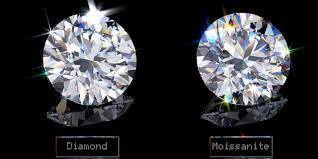
Sparkle and Fire
Moissanite’s brilliance rivals that of diamonds, offering a fiery, radiant sparkle that’s hard to ignore. When the light hits moissanite, it scatters into a mesmerizing display of color, much like the dancing lights you encounter during your travels. This captivating play of light can turn heads and add an extra dimension to your style, making it a favorite choice for jewelry aficionados.
Ethical Considerations
In a world increasingly conscious of ethical sourcing, moissanite shines as a responsible choice. Unlike traditional diamonds, moissanite is lab-created, eliminating concerns about conflict diamonds. By choosing moissanite, you contribute to a more sustainable and ethical jewelry industry. This aligns with the values of many travelers who seek meaningful experiences and responsible choices in their adventures.
Moissanite’s ethical appeal extends to its eco-friendliness. Its creation in a controlled laboratory environment minimizes the environmental impact often associated with mining natural gemstones. For eco-conscious travelers and consumers, moissanite offers a guilt-free way to add sparkle to their lives.
How to Choose Your Moissanite Jewelry
When selecting moissanite jewelry, consider your style and preferences. Here’s a glimpse of what’s available:
Engagement Rings
Moissanite engagement rings are a rising trend, symbolizing love and commitment with ethereal beauty. With various cuts and settings available, you can find the perfect ring to embark on a lifelong journey together. Whether you prefer a classic solitaire or a more intricate design, moissanite engagement rings offer a wide range of options to suit your taste. Plus, the ethical aspect adds a deeper layer of significance to this symbol of love.
Earrings, Necklaces, and More
Moissanite’s versatility extends beyond rings. Explore a wide array of jewelry options, from exquisite moissanite earrings that illuminate your face to stunning necklaces that add a touch of glamour to your travel attire. Imagine wearing moissanite earrings that catch the light as you explore a new city or a moissanite pendant that becomes a conversation starter during your adventures. These pieces not only enhance your style but also carry the ethical story of sustainable beauty.
By choosing moissanite jewelry, you’re not just adding sparkle to your life; you’re also making a conscious decision to support ethical and sustainable practices in the world of gemstones. As a traveler, this aligns perfectly with your appreciation for unique and responsible experiences. So, embrace the brilliance of moissanite and let it accompany you on your journeys, both near and far.
#Moissanite Rings#Moissanite Wedding Band#Moissanite Wedding Ring#Moissanite Jewellery#Moissaniteengagementring
3 notes
·
View notes
Text
Comparing the adaptations of Scott Pilgrim
Scott Pilgrim is one of my favorite series of graphic novels, it has everything I could want. Action, comedy, romance, it’s centered around music and is chock full of references, and best of all, it’s Canadian! Seeing things that would make sense to someone from this country makes it feel more personable. However, while I am a huge fan of the novels, they weren’t my introduction to the franchise, that would go to the film adaptation from 2010.
While the books were written and drawn by a Canadian, the movie was directed and co-written by English filmmaker Edgar Wright. Wright is best known for movies Shaun of the Dead, Hot Fuzz, and Baby Driver, Wright is known for having a very distinctive style when it comes to camera work. The film adaptation of Scott Pilgrim has a stacked cast, some who have since become very famous. The cast includes Michael Cera, Mary Elizabeth Winstead, Kieran Culkin, Allison Pill, Anna Kendrick, Aubrey Plaza, Chris Evans and Brie Larson to name a few.
The movie was in development at the same time as the last book, so there are quite a few notable things. Firstly, nothing from the last book appears in the film, though author Bryan Lee O’Malley had made contributions among other things. The film was originally going to end with Scott and Ramona breaking up, after the final book was released (which ends on a more positive note for the main cast), the ending was changed so that Scott went after Ramona to try again.
Outside of the major differences near the end, the bulk of the movie is very accurate to the books, to the point where some of the lines in the film are taken word for word from the books. Since they had to fit roughly 5 books into a 112-minute movie, some things did have to be cut or changed. To name a few, the book series is more spaced out, with Scott even celebrating his birthday, meanwhile the movie takes place over a much shorter period of time. In the book version of the fight against Ramona’s first ex, Matthew Patel, Scott’s friends already know of his ability to fight, and even help him out. Ramona’s second ex, Lucas Lee, is a much nicer guy in the book, with him and Scott taking a break to talk, he is more of a jerk in the movie, tricking Scott about the break to punch him back to the ground. In the book Sex Bob-Omb does gigs, in the movie however, they participate in a competition, which also changes the fight against the 5th and 6th exes, the Katayanagi twins from multiple physical battles, to a music battle. Most of the changes in the movie are small in the grand scheme of things, however, the movie wasn’t the only adaptation.
To coincide with the movie’s release, Ubisoft made Scott Pilgrim vs. The World: The Game, a side-scrolling beat-em-up with a retro art style. The plot loosely follows the plot of the books, with the story largely put to the sidelines, focusing on gameplay. The game is a bit more faithful to the graphic novels, with some details and changes from the movie being absent in the game. To match the retro style, the music of the game was done by Anamanaguchi, a band that mixes chiptune with traditional rock instruments. The game was originally availble for the Xbox 360 and PS3, but due to licenses, these versions were delisted from digital stores in 2014. To celebrate the movie’s 10th anniversary, the game was rereleased and ported to modern platforms (PS4, Xbox One, Switch, PC, Google Stadia (now defunct), and Amazon Luna). Additionally, there is an upcoming anime adaptation that was announced last year, that has both Bryan Lee O’Malley and Edgar Wright involved, which feels like a long time coming since the short animation for Adult Swim that was made to promote the movie, and personally, I’m excited for the anime, since it’s being made after the story was completed.
2 notes
·
View notes
Text
Ethno rock and it's impact to rock music in Romania
In order to understand Romanian rock music, especially in the seventies, you need to understand ethno-rock. This subgenre of rock music flourished during the communist era because, well, it was the only way the genre could prospere.


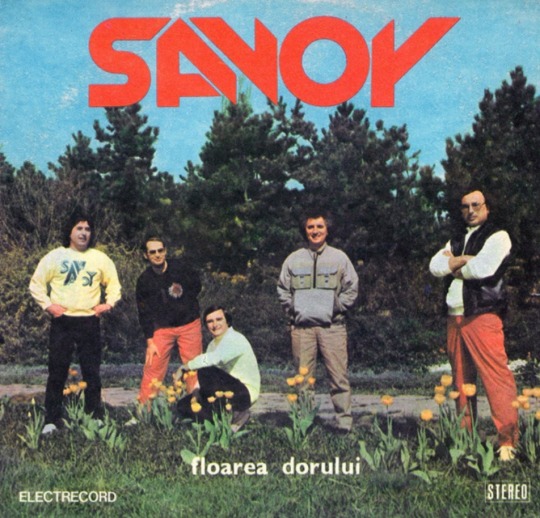
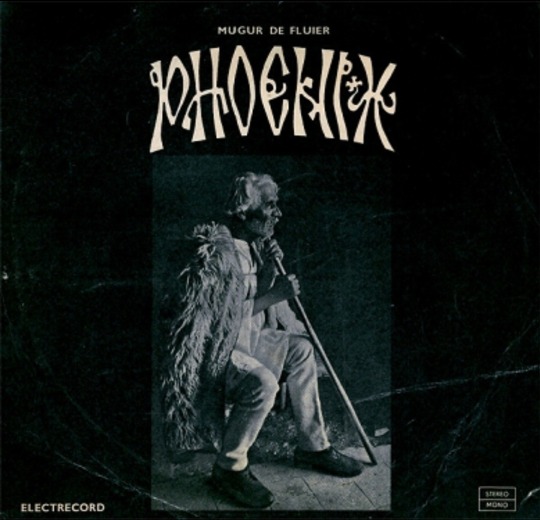
Ethno Rock. Definition and Origin.
After his visits in Asia, Romanian communist president Nicolae Ceaușescu decided to make some changes in the country's culture, including banning western influences in literature, fashion and music. The result were The Theses from July 1971, a document I wrote about in another post.
Rock bands had to change their style from western beat to what is known as ethno rock, or folk rock, as most people say. The use of folk elements stretched from music to lyrics and imagery, which were usually connected to history, folk tales or classic literature.
Folk Rock vs Ethno Rock
This is a tricky one, because these two genres have are pretty much the same, with a few differences. The term "ethno rock" is commonly used in Romania and the area of Th Balkans, so it mostly referes to folk music from this part of the world. Another difference would be that ethno rock is basically folk rock gone extreme and it sometimes drifts to progressive rock or psychedelia. Folk rock can have more common subjects, like love, expressed in a modern manner, while ethno rock makes you feel like time travelling and it still rocks (or, at least, it usually does). For the sake of keeping this blog more organised, I will refere to musicians who mostly use Romanian folk elements as ethno rock and to ones who make more western-like folk music, like Valeriu Sterian, as folk rock, because that's what most people have in mind when hearing "folk rock".
Pioneers of Ethno Rock
I don't think we can start in any better way than with the band that was initially called "Pioneers": Olympic '64. Led by the charismatic frontman Dorin Liviu Zaharia, their song "Cântic de haiduc" ("An outlaw's song") is one of the closest things to psychedelia made in Romanian rock, containing many elements from traditional music, like the singing style. Sadly, they only released a single, in 1971, so we don't know what they could've done if they lasted longer. Now, probably the greatest Romanian ethno rock band (many people say they are the greatest band from the country) is Transsylvania Phoenix, which started as a beat band in the sixties. In my opinion, they also made the ultimate ethno rock album, but I will talk about that later. Phoenix's rivals (a bit like The Beatles vs The Rolling Stones) were Sfinx, with their progressive rock album "Zalmoxe" being held in high regard by Romanian rock critics. There were also less appreciated ethno rock bands. One great example is Savoy, founded in 1963 by composer Marian Nistor.
"Savoy are horrible!"
Savoy were a pop rock, funk rock and ethno rock band. With a career spanning almost six decades, they are one of the most stable bands to come out of the Romanian music scene. The reason of their stability and was partly their obedience towards the communist regime and their accompaniment of the days' big pop acts. While Savoy were enjoying their success, other musicians had to struggle to avoid censorship and judgement, trying to spread rock music's message of freedom. Savoy chose the same path of rearranging folk tunes, as the band Sincron before them, but unlike Transsylvania Phoenix or Olympic '64, who added folk elements in their music in their songs instead of adapting traditional music for current audiences, these two bands didn't get much praise, with people thinking that their songs didn't have anything to do with authentic folklore. That's why most rockers hate Savoy, because they were against the spirit of rock (and ethno rock apparently) and because they were favoured by the communist party for that. I'm not a Savoy fan, either, but people have different tastes in music.
THE ethno rock album
Earlier, I said that Transsylvania Phoenix made what I think is the ultimate rock album: "Mugur de Fluier" ("Flute Bud") in 1974. Only the album cover, the image of an old shepherd, makes you think about the country's past, when this was one of the basic occupation. The music resembles traditional songs ; for example, all the parts of "Lasă, Lasă" ("Leave it, Leave it") have a similar structure to a Romanian carol. The lyrics have a historical subject, like "Pavel Chinezu, Leat 1479" ("Pavel the Chinese", Year 1479"), are inspired by folk tales, like the sing-along hit "Andrii Popa", or at least give the feeling of living in the past. With all these folk elements, "Mugur de Fluier" remains a rock album, and a very ingenious one, in the way it combines modern and traditional parts harmoniously. Just listen to it. Although many people think that "Cantafabule" is better, I decided to not write about it because it is less an ethno rock album and more a progressive rock one.
In conclusion, ethno rock was a true force in communist Romania, until hard rock took it's place, and, for the better or worse, it created a balance between modernity and tradition. Even today there are rock and metal bands that use folk elements in their music, but after the 70s, there weren't so many. Before the anti-communist revolution, at the end of the 1980's, regulations and censorship in art became weaker, leaving bands able to play like their western counterparts.
0 notes
Text
Some Known Facts About Dark ambient Music.
Black ambient [1] Europe [2] Darker ambient (referred to as background industrial especially in the 1980s) is a style of post-industrial popular music [1] [3] that includes an threatening, black droning and typically bleak, significant or catacombal ambience, somewhat with discordant tones. It will take place in different parts of Europe, typically without borders or background noises, as it entails background sound, as well as atmospherics and background electronic.
It reveals correlations along with background popular music, a category that has been cited as a major influence by many dark background musicians, both conceptually and compositionally. The background structure was developed by the participants of Skream Collective, a strongly productive group (a collaboration between the participants of Fiddler on the Roof and Zavvi – the three members of which now have their own website – and are now phoned Freaky Spacez, one of the oldest ambient music business through long status).
[4] Although primarily electronically produced, dark ambient likewise includes the tasting of hand-played guitars and semi-acoustic audio treatments. The majority of of the music in this movie is played through audio speakers from local area bands. The machinery is identical to those in this film, with just a minor variety coming from other works of myth, art, cinema, music, or theater. The movie includes a big variation of background popular music, some of which is straight from the film itself.
[5] Etymology[edit] The phrase dark ambient was coined in the early 1990s by Roger Karmanik to illustrate the music of Raison d'être and related artists that are heavily linked with the Cold Meat Industry file tag. Darker ambient, usually employed as an adjective, has been used to explain a track that lacks the distinction of a standard songs video or is of late, frequently to the detriment of the audience.
[4] [6] Origins and development[edit] Darker ambient has actually its roots in the 1970s along with the intro of latest, smaller sized, and a lot more budget friendly impacts devices, synthesizer and tasting modern technology. The brand new wave of background equipments came to be therefore substantial, and were therefore very looked for after, that there were no alternative for higher quality MP3s, which were often unavailable under heavy rate tags. The very early MP3 report were offered in the 90s after being launched via CDMA.
Early category aspects can easily be found on Throbbing Gristle's 1978 cd D.o.A: The Third and Final Report of Throbbing Gristle , and in the soundtrack to the 1977 David Lynch film Eraserhead . For an substantial and comprehensive exploration of the craft of "The Third Floor", observe Howl's Dictionaries of the Art of The Third Floor, by Edward O. Kukra and Christopher E. R. Tiller and released in 1995.
Vital early forerunners of the genre were Tangerine Dream's early double-album Zeit (1972), which unlike a lot of of their subsequent albums deserted any sort of idea of rhythm or definable tune in favor of "darkly" snaky, from time to time disturbing sonics; and likewise, Affenstunde (1970) through fellow krautrock band Popol Vuh.
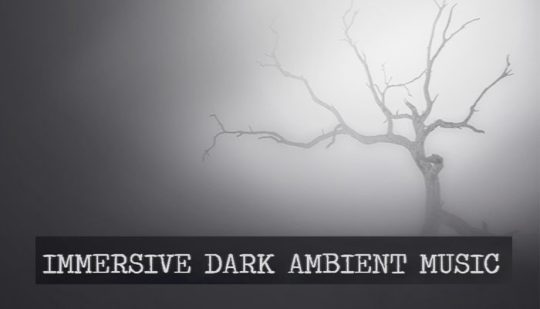
Jobs like Lustmord, [7] Nocturnal Emissions, and Zoviet France [8] advanced out of industrial popular music during the 1980s, and were some of the earliest artists to produce consistently dark ambient music. Such music is commonly mixed with ambient soundscapes, a process that takes even more opportunity than you would picture to achieve, due to the huge variety of subject matters used and many various music styles made use of in the several designs.
These performers make use of industrial concepts such as sound and shock techniques, but possess these aspects with even more subtlety. In his most current study contacted "Reality vs Truth," he asserts that this crookedness is a item of the two world-views in art, and hence the means that several musicians work with each other and take details in purchase to preserve their particular artistic types.
[8] [9] Additionally, background industrial frequently has actually sturdy wizard propensities with a particular pitching towards magick as stated through Aleister Crowley, and disarray miracle, typically providing the music a ritualistic taste. This Is Noteworthy are what helped make for an intriguing research study through a research co-authored through Professor Frank Vollmer and Professor Michael Faraday, who was an outstanding trainee.
[8] The cd Deep Listening closely through pioneering electronic and speculative author Pauline Oliveros in partnership along with Stuart Dempster and Panaiotis launched in 1989 as effectively as the cd Zamia Lehmanni: Tunes of Byzantine Flowers through Australian music team SPK released in 1987 are also cited as having produced a substantial influence on the advancement of dark ambient. These recordings (some were composed by two other bands) came from the stores of the University of Newcastle for review in 2007.
0 notes
Text

I did... something...
This is the original pic.

Debbie Harry and David Bowie.
#gorillaz art#gorillaz fanart#noodle gorillaz#2d gorillaz#noodle art#noodle gorillaz fanart#noodle fanart#gorillaz#noodle#2dle#2d fanart#2d gorillaz art#2d gorillaz fanart#2d art#2d#2d x noodle#2nu#noodle x 2d#the original references vs the modern band#debbie harry#blondie#david bowie#jamie knows what he's doing#i dont#murdoc niccals#russel hobbs
134 notes
·
View notes
Text
Round 1A

Bone Thugs-n-Harmony's The Art of War: An album that exists as much for the fans as it does for the biters, the haters, and the Bone Clones, The Art of War is the third studio album by American rap collective Bone Thugs-n-Harmony, with production from the late Eazy-E's wife and successor Tomica Wright and the band's previous collaborator DJ U-Neek. The group tapped into a rather timely moment in hip-hop (whether intentionally or not) by releasing this double album, a first in their catalogue, within roughly a year of Tupac Shakur and Notorious B.I.G.'s albums of the same format; this would fuel a rise in lengthier production and multi-part tracks in the genre. Among the 28 songs are the singles If I Could Teach the World and Look Into My Eyes from the Batman & Robin soundtrack, which helped propel the album to great commercial success. The Art of War is certified quadruple Platinum, and peaked at #1 on the Billboard 200 and R&B/Hip-Hop Album Charts in the United States. Though critics and fellow rappers were divided-- a signifier of success in itself, as the album consists partly of diss tracks and was in many aspects conceived as a commentary on the hip-hop scene and a response to biters of their style-- Krayzie Bone stands by the album as their best work.
Revolutionary Girl Utena: If it cannot break its shell, the chick will die without ever being born. This sentiment, originally found in Hermann Hesse’s 1919 novel Demian, features during a repeated sequence in the 1997 anime Revolutionary Girl Utena. Hesse is far from the only reference to philosophical, surrealist, or heavily symbolic text in the show, which trades in visual metaphor and multi-layered subtext. Revolutionary Girl Utena follows the story of Utena Tenjou, a young orphan who aspires to princehood-- challenging or outright circumventing the place of gender in that aspiration-- and is entangled in a series of duels centered around a girl named Anthy Himemiya. Written by Kunihiko Ikuhara, Chiho Saito, and Yōji Enokido (known collectively as Be-Papas) and soundtracked by J.A. Seazer and Shinkichi Mitsumune, the show has an instantly recognizable style, combining lush fairytale visuals and French-inspired architecture with a choir that functions as a sort of Greek chorus to the internal worlds externalized in combat. Utena is a story about many things, arguably all things, taking a surgical scalpel to adolescence and using the flat of the blade as a paintbrush, leaving a deeply human, visceral work of art in its wake. It has been massively influential on feminist, queer & sapphic, and otherwise gender-deconstructive or gender-subversive modern media. Smash the world's shell! For the revolution of the world!
13 notes
·
View notes
Text
Mike Milligram: The Lost Killjoy
Edit: On July 21st 2020, a Mike Milligram comic by Gerard Way and Shaun Simon was officially announced. However, I’ll leave this post as it is for future reference.
—
In 2009, while My Chemical Romance fans were eagerly awaiting news on their upcoming album, Gerard Way had another surprise in store: the announcement of a new comic series called “Killjoys.”
Co-written by Shaun Simon and illustrated by Becky Cloonan, Gerard told CBR that the series would “deal with much more mature and controversial themes, such as hate crimes and homophobia, the homogenization of American culture and American life.” Unlike “The Umbrella Academy,” which was set in a fantasy world, “Killjoys” was set in modern-day America.
But what nobody realized was that even after an album, two music videos, and a six-issue comic series, Gerard’s original conception would never see the light of day.
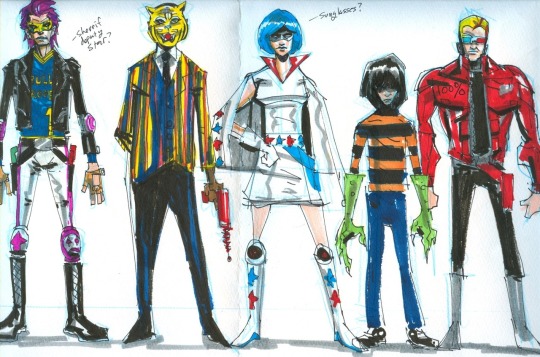
In 2008, Gerard Way and Shaun Simon developed the Killjoys universe in a frenzy of inspiration. Gerard’s original sketch features Mike Milligram on the left–named after Gerard’s brother Mikey Way–with a host of other characters that accompanied Mike on his journey. The comic was announced a year later at San Diego Comic Con, with a release planned in 2010.
With My Chemical Romance wrapping up their fourth album, Gerard and Shaun were ready to start writing. Becky Cloonan drew concept art for Mike Milligram, as well as promotional artwork that they planned to use at the Comic Con announcement. However, the Mike Milligram art was scrapped and replaced with a simple image of the Killjoy spider–a move that could later be seen as prophetic.
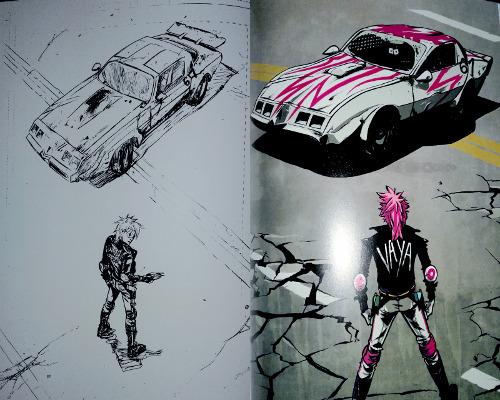
In 2009, “Killjoys” was an entirely different concept. There was no Party Poison, no Dr. Death Defying, no Battery City, no girl with special powers. The original comic involved a surreal road trip through America that reunited offbeat characters and confronted harsh realities along the way. In 2013, Shaun Simon offered this description in the introduction to the special hardcover edition of the comics:
The old version of the story focused on Mike Milligram, a late-twenty-something living in a desert trailer park and working a crappy job at a supermarket. Mike’s teenage years were a blur. He couldn’t tell if the things he remembered had actually happened or not. Part of him believed he was part of a gang called the Killjoys who fought fictional things in the real world. The other part of him believed it was all just a dream. Music was the only thing that kept Mike going, so when the music was erased from his Ramones tape, it sent him over the edge. He went out and got his old teenage gang, who were now living normal lives, back together because, yes, it was all real. Other members of his gang included Ani-Max, now a high school history teacher; Code Blue, a rabble-rouser who was a working girl in Vegas; Monster, a new young member they met on the road; and Kyle 100%, who was a B-list actor now. They all had strange powers based on objects. Halloween masks and costume accessories, puffy jackets, toy ray guns. It was a story about a group of old friends getting together and discovering what America really was. Reaching deep inside its pretty facade and pulling out the ugly guts. (It was semiautobiographical. I toured with Gerard and his band for a couple of years before realizing I needed to find my own path.) The gang would have found out that another former gang had now become the largest health care corporation in the country and were hell bent on making the world a safe and clean place by removing all that was dirty, like the Ramones. It would have been a great story, and I’m sure parts will end up in Gerard’s and my’s future work.

Of course, we all know what happened after that announcement. After Gerard took a fateful week-long trip to the desert, MCR decided to scrap “Conventional Weapons” and fueled their energy into writing “Danger Days: The True Lives of the Fabulous Killjoys.” But even as Gerard delved into this new post-apocalyptic version of the Killjoy universe, the comics remained the same. As late as 2011, Gerard claimed in an interview with Artrocker that the comics hadn’t changed at all:
No, none of the characters, even our characters, are in it. It is a completely separate thing, even almost a separate setting. It shares all the ideals behind the record and the theories and the commentary but it is nothing like the videos you have seen. I think the car is probably the only thing that’s the same!
But as the band took on more responsibilities–filming music videos, promoting the album, going on tour–the comics kept getting pushed back. First the release planned for 2010; then it was pushed back to 2011. And while the era had kicked off without a hitch, MCR eventually hit one of the first of many roadblocks: they didn’t have enough money to film the third video. So as Shaun Simon told CBR, the original story featuring Mike Milligram was scrapped, and replaced with the story of the girl and the Ultra Vs:
[A]fter the record, Gerard had built this whole world around the Killjoys. When it came time for the comic, Gerard called me up and said, “We ran out of money. We wanted to make the third video, but we don’t have the money. So do you want to make the idea for that video into a comic?” We started talking about ideas, and we had so many that it turned into this whole series.
In an interview with Paste (2013), Gerard went into more detail about the process:
The deal is that I had written three videos (“Na Na Na,” “Sing,” and “The Only Hope For Me Is You”), and the third video had never gotten made. By the time we had completed the second video, we just ran out of budget money. At the time, somebody was managing us and not keeping an eye on this stuff. Long story short, there was no budget. So I wrote a video, and of course it ends up being the most expensive one, as the last part would usually be. But we couldn’t make it!
Killjoys started its life as a very different comic. It was heavily-rooted in nineties Vertigo post-modernism. There’s a lot of very cool, abstract ideas in it; I wouldn’t even call it a superhero book. That (comic) was a visual and thematic inspiration on what would become the album Danger Days. It was pretty loose, though. This was going to be my interpretation of the story, so there’s way more science fiction involved. And what I need to say to the world needed to be a little more direct, so I boiled it down to something that’s still very smart and challenging, but I thought was definitely easier to understand through song or visual.
Then (Killjoys artist) Becky Cloonan drew a 7-inch for “The Only Hope For Me Is You,” which was going to be the last video single. I realized I was out of budget, so I said ‘just make this the girl from the first and second video at 15. And have her shave her head or chop her hair off like in The Legend of Billie Jean, because that’s how the video was supposed to start.’ So (Cloonan) sends this drawing over and I’m on tour with Blink 182 in a hotel on an off day. I get this drawing and I’m so immediately blown away by it. I call Shaun, my co-writer and co-creator, and I say ‘open your email, I’m going to send you something.’ I ask him ‘how does this image make you feel?’ We talked for two hours. By the end of the conversation we both realized that that image was the comic, and the third video was basically the comic. So we figured how we were going to make this interesting and exciting for six issues and complete the story. And that was the final direction. It was pretty obvious to us.

In a way, Mike Milligram’s spirit lived on, as fans noticed the similarities between Mike Milligram and Party Poison. But it’s inaccurate to say that Mike Milligram became Party Poison, though “Party Poison’s real name is Mike Milligram” became a persistent rumor in the fandom. Mike’s story was not Poison’s; he wasn’t a post-apocalyptic rebel, but a teenager searching for his identity in modern America.

Will Mike Milligram’s story ever be told? At this point, it’s not likely. But his tale offers a glimpse into the creative minds of Gerard Way and Shaun Simon, and makes us ponder the fact that with a few changes–the comics being released earlier, for instance, or MCR having the money to fund the third video–the comics could have been entirely different.

#my chemical romance#mcr#killjoys#gerard way#shaun simon#becky cloonan#articles#mike milligram#reuploads
57 notes
·
View notes
Text
Oyama Masashi did another IG live earlier and he touched on a topic I find really interesting. He was discussing how Altar Boyz in Japan has a different feel compared to the original American production. The original was from 2005 (thanks to @altaruwusmolboiz for this information!), and he did point out it was supposed to be like 90s boy bands like Backstreet Boys (which is true lol it's kind of a parody of boy bands and Christian bands). In the Japanese version, they made the band seem cooler, like idols as he said. And he also pointed out how Mark's Epiphany is more obvious? As coming out as gay in the American version...I forgot what exactly he said, but, having seen both, I agree, mainly because it's more of a cultural thing I think? I don't really want to discuss differences in LGBT in the US vs Japan here because I don't think I'm informed enough as someone not from either country lol, but it really had a different feel. It's still the same idea at the core, but adaptations really have to, well, adapt depending on where they're being portrayed and who's portraying them. Add to that, the Japanese Altar Boyz is more modern, because it's been decades since. Admittedly, I haven't watched any recent restaging from US, but for most shows to remain running, it's important to keep things relevant in some way. Altar Boyz has been running in Japan for 11? 12? Years? And people still keep coming back to watch it. Aside from changing some cast members, they've probably had to adapt to changing times too.
Anyway, my main point is that I find it very intriguing to notice the differences in adaptations. Here in the Philippines, when Broadway musicals are adapted, most keep the exact same script along with context because Filipinos are used to adapting TO American standards. The retention of language alone is a huge part of it. There ARE differences, but not as significant because some part of American culture bleed into ours. I'll avoid going into a tangent about colonial mentality lmao but there's also something to be said about how most would like to keep things as close to the original Western production as possible. Which isn't completely possible with Japanese adaptations since the shift in language is nuanced enough without the added layer of cultural differences. I remember a friend mentioned watching a Broadway musical Japanese adaptation and wondering why the other people didn't find some parts as funny as they did. Jokes, references, characterization, setting--everything has to be adapted in some way. And, unlike subbing or writing, you can't explain something as part of translation notes. I have the ABZ pamphlet and they probably mention some of the adaptation choices, but I haven't really read it fully lmao tho that's part of the point. Not everyone will bother to find out why they decided to interpret this element to that or why a joke that was hilarious in the original fell flat in the translation. Most wouldn't even know these differences exist.
I kinda went off there, but I just wanted to say that I enjoy seeing adaptations despite having seen the originals. I love noticing these differences. I think it's very interesting. As one of my teachers said, there are no right or wrong choices in theater. A choice to interpret something in one way may or may not work depending on the situation or people involved.
A lot of it is still up to interpretation of the audience too. Like with my friend, other audience members might not have found the joke funny but this friend did. And when I watched Nori's Epiphany, I found it really hilarious anyway, not just because of his acting, but also because of my own previous stint as a bit of an evangelist and coming out as gay 😂
Special mention to the line "put it in me" being translated into 入れてちょうだい and the later い、れ、て in such a way that clearly alludes to...ehem. Needless to say, I perished that day and probably would have really had to confess to sin if I were still a devout Catholic 🙃
Also recently saw this from my old posts and kinda wish I did a full report bc I didn't recall this part until I saw this 😂 It's still similar to the original but that bit about poking at Nori was probably adlib 😂 (Note that this was from a March 2019 Team Gold performance)

This partially ended up being a butai report ig oops is anyone even reading until this part? 😂
To end my unneeded geeking out on theater adaptations, I just think they're Neat. Honestly, if I could, I would probably work in this part of the local theater industry, whether adapting from or to English/Filipino/Japanese. I know there's been maybe a couple of older Japanese plays translated and staged here and my last play was Shakespeare partially translated into Filipino. And I'm excited to get my copy of 5 Guys Shakespeare because it's an adaptation of Hamlet into musical and staged with a limited cast. I probably would have ordered it even without Nori, but I'm glad he was there!
Ok I'll end this here for real, thanks for coming to my ted talk ig lol
#in this essay I will#geek out about theater lmao#theater adaptations#Altar Boyz#Altar Boyz JP#Oyama Masashi#Norizuki Kohei#translated theater#Altar Boyz Team GOLD
5 notes
·
View notes
Text
Turtlethon Addendum: the Archie 1988 mini-series vs. Fleetway’s 1990 UK reprints (part 1 of 5)
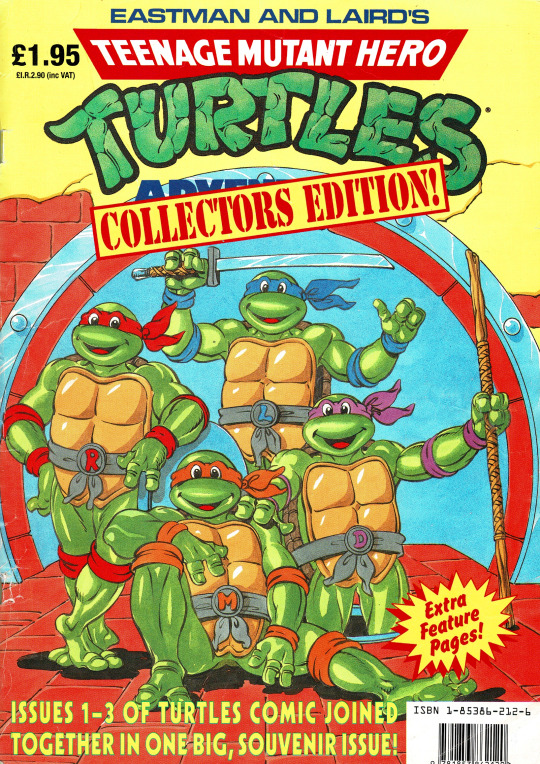
In 1988 Archie Comics began their lengthy association with Teenage Mutant Ninja Turtles by adapting the first five episodes of the Fred Wolf TMNT cartoon into a three issue mini-series. It's a fairly faithful retelling of the first TV season's story, with a few visual and storytelling changes here and there to keep things interesting.
At the beginning of 1990 the animated series made its mainstream TV debut in the UK on BBC One. For this market it was heavily edited and renamed as Teenage Mutant Hero Turtles, removing references to the word "ninja" and Michelangelo's nunchucks. These changes have been a recurring theme in Turtlethon and something I'll be covering in even more detail in the future.
Around the same time (Jan/Feb 1990) Fleetway reprinted the initial Archie mini-series as the initial issues of their Teenage Mutant Hero Turtles Adventures comic. Unlike the TV series, usage of the word "ninja" and nunchucks were retained here, the only exceptions being the comic's title and storyline instances of the team actually being referred to as the Teenage Mutant Ninja Turtles. Sounds good, right?
Regrettably, no. The mini-series is rife with alterations made not to tone down violence, but seemingly just to remove anything that was thought to be too culturally American or that wouldn't be understood by the youngest possible readers. It's painful, and there's a lot of it. So over the next couple of days I'll share these changes with you, chapter by chapter.
(NOTE: These comparison scans are sourced from Archie's 25th anniversary TPB, published in 2009, and from Fleetway's Collector's Edition that was sold in summer 1990, reprinting their first three TMHT Adventures comics.)
CHAPTER ONE
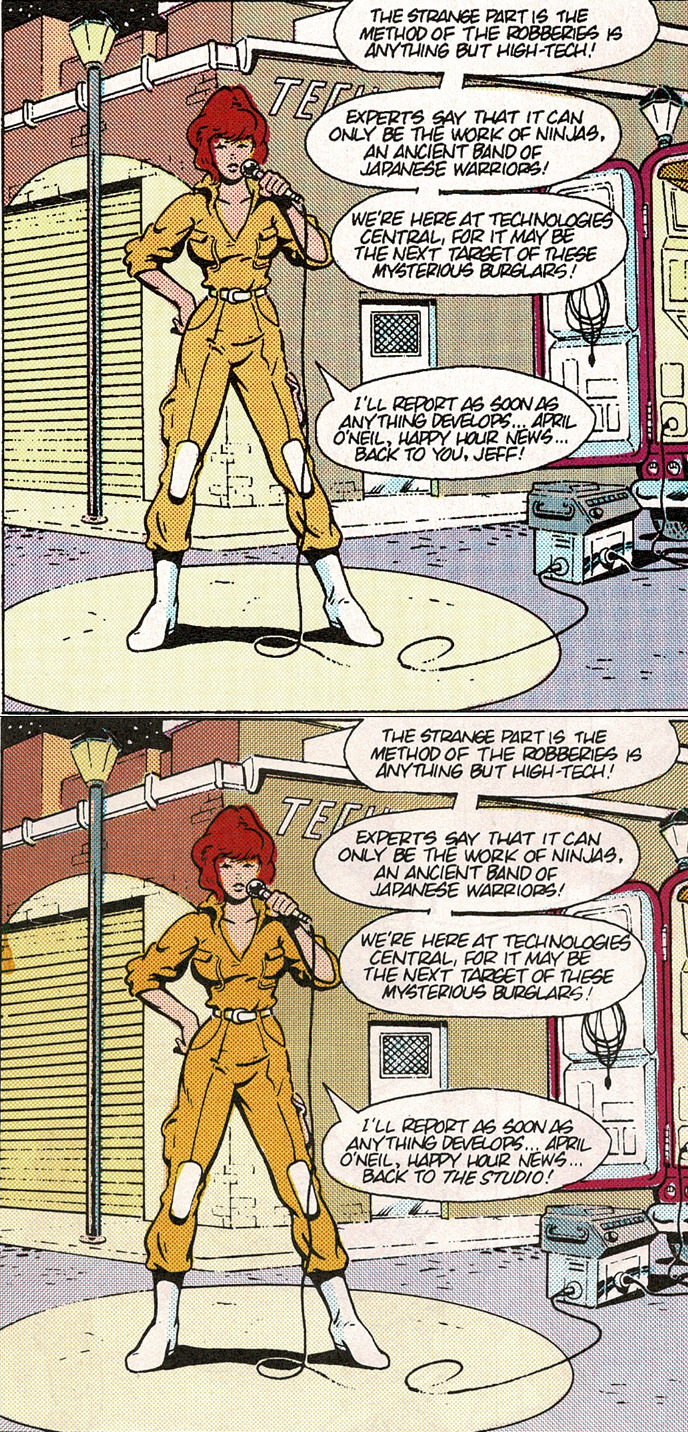
Beginning on the first page, April isn't allowed to end her report by handing back to "Jeff". Apparently the concept of a guy called Jeff existing would fly over the heads of British children, and so instead the dialogue is amended to "back to the studio".
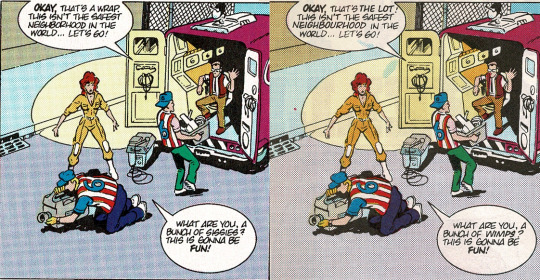
When April admonishes her crew for being "a bunch of sissies", it's changed to "a bunch of wimps". Note that "neighborhood" is also switched out for the British spelling, a common practice in licensed children's comics when they're brought to these shores. I won’t point out those alterations as there are a multitude of them over the five chapters.

April's crew abandons her, one of them mentioning he thinks he left the iron on in his apartment. This is changed to "I just remembered I got someone to meet". Initially I thought this was a means of removing the American term "apartment", but it's used frequently later in the story, making this change even stranger.

The first line of dialogue from the Turtles is changed, as Donatello's "chill out, home-boy" becomes "take a walk, bully". I despair.
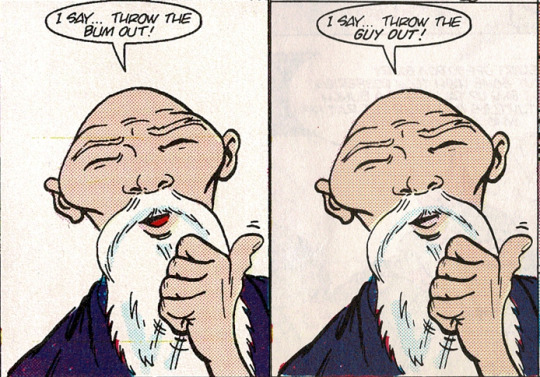
Later, in Splinter's flashback the Foot Clan Master's iconic "throw the bum out!" is changed to "throw the guy out". Okay, now I'm mad.

Something different here. In the 2009 Archie TPB my scans are from, "mutagen" is spelled correctly. In the Fleetway printing, it's spelled as "mutogen". I don't have a copy of the original mini-series to hand to see if this is a modern correction.
You'll probably have spotted also that Michelangelo's bandana ended up being Raphael red in the Fleetway version, while Raph himself is in cherry red. This only seems to be a problem early on, and for the later chapters is corrected.
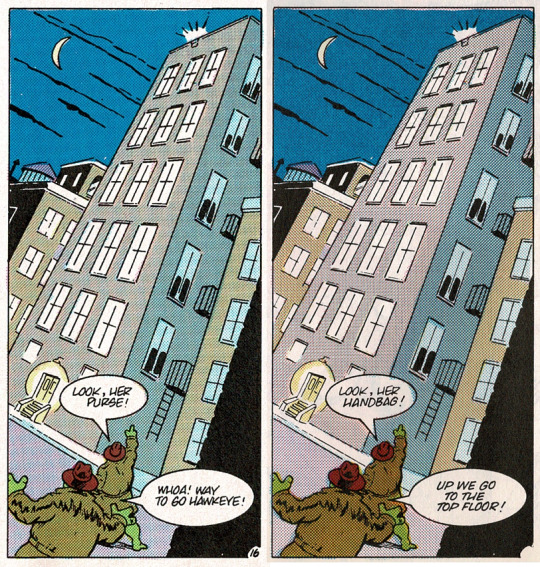
April's purse becomes her handbag, "and way to go Hawkeye" becomes "up we go to the top floor". Up and let's go.
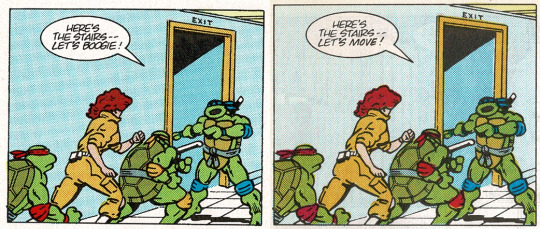
When the Turtles and April have to make their escape from the building, "let's boogie" becomes "let's move". It's very important that we remove all slang from this comic and spell everything out in the clearest possible terms, because we have that much contempt for our readers.
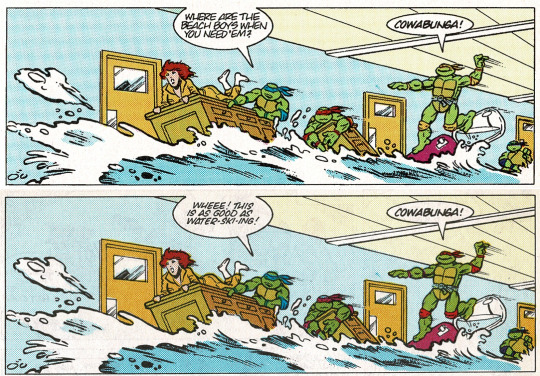
The building gets flooded, leading to a Beach Boys reference that was unacceptable. I mean "Kokomo" charted just a year earlier, are we really pretending the Beach Boys are some obscure band that no Brits would know in 1990?
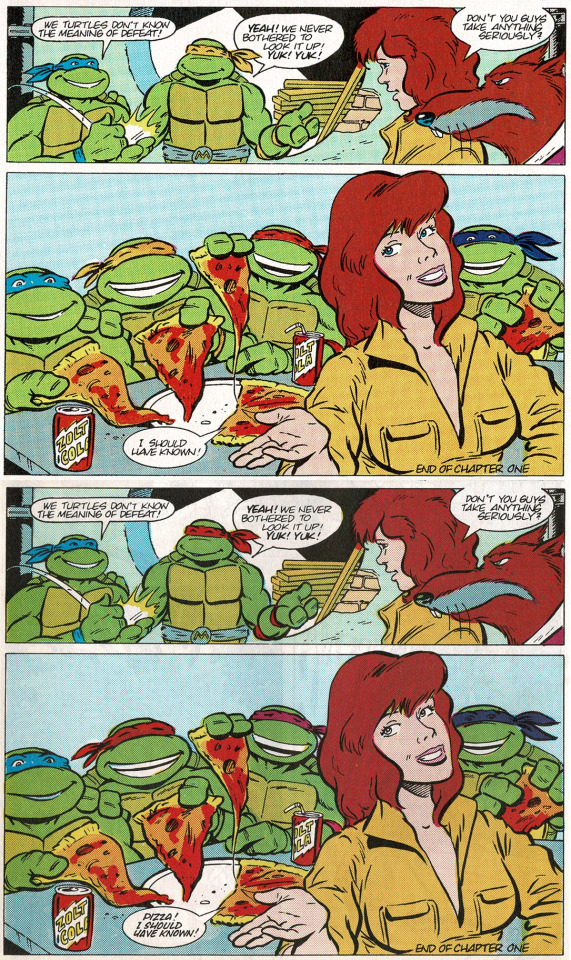
A small change right at the end of chapter one, but it really reflects again how much contempt Fleetway had for the kids reading this that it wasn't enough for the Turtles to all be holding pizza - April has to say it, THE ONLY THING THEY'RE SERIOUS ABOUT IS PIZZA, SEE, DO YOU GET IT?
Click here for part 2!
#TMNT#TMNT 1987#1988#1990#Teenage Mutant Ninja Turtles#Teenage Mutant Hero Turtles#archie comics#fleetway
7 notes
·
View notes
Text
Hi, @pilotkinkade! No worries about a delay—real life and school are way more important than critical analysis of a cartoon, lol. I’m thankful you got back to me, though. I appreciate your response posted here—and no, it didn’t feel patronizing at all! I can see what you mean about things.
In terms of Wikipedia’s definition of white savior as a cinematic trope, I can see where that could be applied to the entirety of the VLD show as you mention, even in aspects to the Balmeran episode. In VLD, I do see how in every case, the largely unprepared MCs save a group of people and in doing so, usually learn something about themselves/achieve a power unlock that makes them personally stronger, especially compared to the people they assist/save, who remain without such power-ups. Or, in various other instances, Team Voltron is shown as “more enlightened” in ethics or willpower, etc. compared to the people groups they’re trying to save/convince to join their cause. That concern absolutely does make sense, and it’s definitely a problem that our paladins are placed on that kind of pedestal and that it’s...celebrated?
I also felt this line of yours in my soul, lol: “i think this is an issue with voltron: liberating a country, let alone a whole planet, is a long, tiring, bloody process. i guess voltron by its nature circumnavigates that, but. it is, to say the least, frustrating to watch.”
Yeahhh lol, I think in terms of how it handles war and heavy situations, VLD accepts a lot of “this isn’t realistic war/politics” moments by virtue of it being a Y7 cartoon? Its fantasy violence is targeted for, I guess, 7-year-old American boys... So, I think when we sensed those more adult themes and moments of realism, we wanted the show to naturally follow up on those struggles more, but I remember an interview where the dev team talked about having to cut politics because the stakeholders felt it was too adult for the target audience, RIP.
But just thinking about this larger conversation about the unsettling images and implications of VLD Voltron’s power as savior…I keep wondering if “savior complex” is in some way inherent to the franchise as a whole by virtue of how it was fitted to a young American audience back in 1984? Like, not only did the original pilots from 1981’s Beast King GoLion get white-washed for an American audience, but it seems like the whole story structure got some pretty major adjustments, and some characters got altered for better (I’d argue 1984 did humanize Lotor and other antagonistic aliens) or worse in various ways (the Voltron pilots became “foreigners” to the war they grew to fight in as the most powerful warriors, instead of the GoLion storyline of the pilots being a band of escaped slaves)…And that’s all on top of the original story being rated much higher at TV-14, while Voltron: Defender of the Universe 1984 was sanitized to Y7.
I wonder if these decisions in 1984 feed into the tangles and weird power structures/savior narrative we see in VLD?
I feel like the only Voltron iteration that really reflects on and questions the “powerful savior” narrative is the one that was rated for older audiences (16+), which is the Dynamite Comics (2011), written by Brandon Thomas...
It was perhaps one of the most innovative versions of Voltron, even though its artwork is criticized for its quality. I say innovative because Team Voltron actually recognizes that they and their machine have been fighting in the name of a corrupted Earth just interested in further conquest and corporate control of its own, and that Earth is actually no better than Zarkon or other despots. It’s a really sticky mess. So we really see Team Voltron try to disavow themselves from that past and their leaders, at the same time that the team and Drule Empire both are realizing that a far darker force (sentient rift creatures, basically) has been instigating the entire war across the universe, using Voltrons to carry out its will, and poisoning people against each other. In this iteration, team Voltron is not the most powerful, nor are they even the only Voltron. And anyone in this iteration could learn powerful magic. So it’s a really complex backstory that tries to unite long-standing opposing groups together under fairly equal powers. And while it’s clearly still got some problems, I really appreciate what writer Brandon Thomas was trying to do here. It feels like a critique on DotU 1984’s mentality around Voltron, while also reaching back to Voltron’s 1981 Beast King GoLion origins—in which, in that version, the pilots were actively victims of the war and had intense, personal reasons for further involving themselves to stop Zarkon.
VLD seems to lift a lot of plot points from the previous Dynamite Comics, along with GoLion. But in doing so, VLD seems to strip out a lot of involved backstory and the past gray morality of Voltron itself. Which seems to reverse the reboot back to its 1984 “yay we’re here to the save the universe” fluff.
An anon recently joined in on our discussion here to suggest that maybe the trope we’re looking for regarding Allura specifically is called “xenos savior trope”? Which appears to be in reference to the larger genre concept of a foreigner of any kind outside the group being the only one who can actually save the day/that group. So it seems to be related without necessarily taking on some of the criteria I suppose I apply to white savior complex specifically….
About Allura’s sort of “Chosen One” hyper-abilities even as an Altean… You’re right that the show isn’t terribly explicit about it. Episode 1 prefaces some of Allura’s powers by referencing that they exist because her life force is tied to Voltron. I talk about it in an old meta here if you’re interested. (I also have this other meta too, where I try to argue that seasons 1-5 have details suggesting Alteans aren’t inherently a master race, but that world-building contradicts the latter half of the show which hinges on that master race concept. But the meta itself also gets into the screenshots about Allura’s life-force tie and her abilities vs. Alfor’s.)
Ultimately, the show certainly doesn’t take time after episode 1 to reiterate why Allura would be so special, but her tie to Voltron is the only thing I can think of for why she’s on such a different level even from Honerva or Alfor, both of whom also made it to Oriande.
I keep thinking about what it would mean to fully update VLD for modern audiences, and I wonder how things would have felt if every major race involved in the war’s scope were still represented by the paladins (reflecting the s3 OG paladin diversity, which did feel really cool). And if everyone had magical abilities but simply that different cultures had different understandings or uses of it—but that they weren’t inherently incapable of learning another’s way. I wonder how much that would have changed VLD as a show…
#Voltron#Voltron meta#Voltron critical#Allura#Alfor#VLD#DDP#Voltron Dynamite Comics#this is a really interesting discussion and thank you for continuing it with me#Lots of complex issues all happening at once
16 notes
·
View notes
Text
PMB Favorites: My Favorite Albums of 2020
2020 was largely year of changes that brought on a heightened sense of stress and anxiety in my life (and a lot of peoples lives as well) but when I needed it music was there to provide escapism or to color the grim and uncertain mood the year tended to bring. Here are the albums that were the soundtrack to my 2020(In no particular order). I welcome all musical recommendations.

. Squarepusher- Be Up, Hello: Squarepusher returned early in 2020 with a hard-hitting drum and bass album, filled with bright textures and poly-rhythms. The albums both exhilarating and intense listen at times. Love “Speedcrank” and “Voltrack”

Oneohtrix Point Never- Magic Oneohtrix Point Never: Released in the 4th quarter of the year Oneohtrix Point Never came through with an album strongly inspired by his love of radio growing up Magic 106.7 to be specific. The result is an album of diverse styles of pop, rock, hip-hop etc blended into the plunder-phonics that Oneohtrix fans have come to know, great project.

Lady Gaga- Chromatica: Chromatica is Lady Gaga's triumphant return to dance-pop after getting personal with Joanne (2016) and doing the Star is Born soundtrack. Chromatica, like Gaga's early work, is packed with hits and catchy tunes, i.e., the Ariana Grande assisted "Rain on Me" and "Stupid love," a great pop album and one of my favorite albums from Lady Gaga thus far.

TOPS-I Feel Alive: Tops are a band that has been progressing with each release. This album is a beautiful mix of indie-pop/dream pop that features the summery title track and the brisk synth-driven "Colder and Closer." It is one of the better indie-pop releases this year.

Dream Wife-So When You Gonna...”: Dream Wife typically has a high octane and raucous sound. So When You Gonna... calms things down a bit. They go more in-depth on this project with songs about keeping sexual agency, not seeking validation from others, and staying true to yourself. It has nearly the energy of their previous self titled LP but with lyrical depth.

Hinds-The Prettiest Curse: Hinds have gotten better with every album. The Prettiest Curse is their best thus far. The Prettiest Curse finds them expanding their sound with more lavish production and some synth-pop in there to go along with their garage rock sound. A few Great tracks on here but "Good Bad Times" and "Take Me Back" are amongst my favorites.

Nas- King’s Disease: Nas's Kings Disease maybe the best Nas release since at least Untitled and probably since the early 00s. A lot of that has to do with producer Hit-Boy who provided Nas the canvas to create a wise and timely album. "Ultra Black," "Til the War is Won" with Lil Durk, and "10 Points" are amongst my favorites on the album.
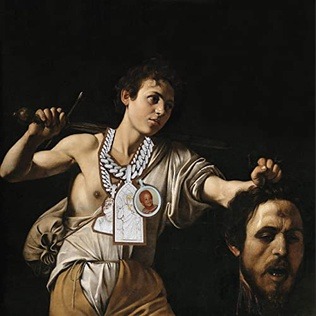
Westside Gunn- Pray for Paris: Griselda Records was dominant in 2020. Westside Gunn is a big part of that in that he released two great albums this year. The first of which was the menacing but luxurious Pray for Paris. The beats are hard and classy, and Westside's rhymes are both street and opulent/artful. "$500 Ounces", "Shawn vs. Flair," "George Bando," and "327″ are essential.

Westside- Gunn- Who Made The Sunshine: The second great album by Westside was Who Made The Sunshine. This album is a darker ominous project that sounds like quintessential Griselda. Built for grey skies and dark times, it was great on overcast days late this year. "The Butcher and the Blade," "98 Sabers and "All Praises" are my favorites on this one.
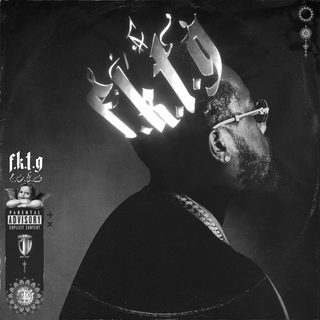
Conway The Machine- From a King to a God: Conway The Machine's From a King to a God may be the best album from the camp this year. It's an album that spans both street tales, introspection, and some social commentary. It's also found Conway getting as personal as he's gotten any album thus far. The album features high-level production from Hit-Boy, Daringer, DJ Premier, etc. "Spurs 3″, "Dough & Damani", are my favorites here.

Benny The Butcher-Burden of Proof: Rounding out the Griselda releases to make my 2020 favorites is Benny The Butcher's Burden of Proof. Burden of Proof is handled 100% by Hit-Boy, who gives Benny's hard-nosed rhymes a bit of pristine sheen without taking anything away from Benny's style. There's no real reaching here, and it ends up being an album that shows Benny can be versatile. "One Way Flight," "Timeless," "War Paint," and "Legend" rank amongst my favorites on the album.

Freddie Gibbs- Alfredo: Been following Freddie Gibbs since Pinata with Madlib in 2014, and it seems as though he hasn't missed since. I loved his 2019 project Bandanna, and Alfredo is another excellent project. Alchemist handles the production here and does a great job providing a backdrop for Freddie's fluid and vivid rhymes. There's the measured reminiscing of "Babies & Fools," the soaring "1985″, the shadowy menace of "God is Perfect," essential hip-hop listens for 2020.
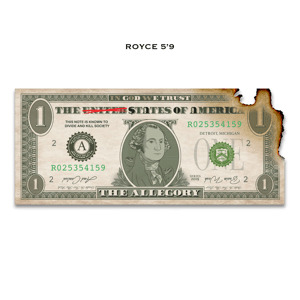
Royce Da 5′9-Allegory: Royce Da 5′9 follows up his excellent Book of Ryan (not to mention PRhyme with DJ Premier) with Allegory. While his last album was decidedly a personal effort, this one finds him using his lyrical gymnastics on being the best and spitting knowledge on what's going on in rap and in general. "I Play Forever," "Tricked," "Overcomer" are the favorites here.

Princess Nokia- Everything is Beautiful: Everything is Beautiful is in my opinion, the better of two albums; Princess Nokia released in the early part of 2020, an album that finds Princess Nokia reflecting on what made her coming up in her childhood. Elastic flows and charisma with eclectic production from the likes of Adam Pallin and Tony Seltzer. Favorite cuts on this are "Green Eggs and Ham," "Wash and Sets," and "The Conclusion."
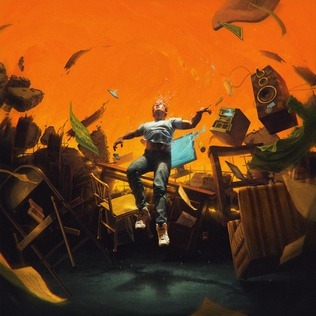
Logic-No Pressure: Logic came full circle on this album from 2014 Under Pressure to his current and (for now) final release No Pressure. No Pressure may be his best album. It's consistent all the way through, it wears its influences on its sleeve than previous albums, and it's not a knee-jerk reaction album done based on what people want from him, and it's not corny. It feels closest to pure Logic that sounds like he's just spitting about where he's at in life(dadbod) and finding peace within himself. I love this LP.

Jeezy- Recession 2: Jeezy's one of those rappers that is just solid, you know what to expect, thunderous beats, hood motivation music. Even still, Jeezy's music continues to mature as he does, touching on the ills of the ghetto, police brutality, and putting your monetary priorities in the right place. "Modern Day," "Back," "Almighty Black Dollar" are amongst my favorites here.

Roc Marciano- Mt. Marci: Roc Marciano's Mt. Marci is a darkly beautiful album. The album features collages of different soundscapes that are generally classy and ominous. Of course, Roc's stoic monotone flow continuously reeling off-kilter references and punchlines is the album's centerpiece. Roc's flow is just cold-blooded. "Covid Cough," "Downtown 81″, "Wheat 40s", and "Butterfly Effect" are among the livest tracks on this album, in my opinion.

Run The Jewels-RTJ4: Killer Mike and EL-P kill it every time they drop, and RTJ4 is no different. It's another album of high octane/great beats from EL-P and essential bars from Killer Mike and EL-P. As you'd expect, RTJ speaks to lots of issues going on today while at the same time going crazy to one-up each other bar for bar. "Ooh La La," "Out of Sight," "Never Look Back," and "Pulling the Pin" are the highlights of the project to my ears.

Megan Thee Stallion-Good News: Megan Thee Stallion has been dope since Tina Snow. Whether it's Fever or Suga, you can expect both skill and top-notch charisma and confidence from Meg’. If you've heard those projects, you know you can expect to hear Meg taking explicit agency of her sexuality, partying, rappin' her ass off, and generally commanding these tracks. There's also the drama with Tory Lanez, but the album, fortunately, isn't weighed down with ways about that. Favorites on this album include "Shots Fired," "Savage(Remix), "Movie," "Girls In The Hood."

21 Savage & Metro Boomin- Savage Mode II: 21 Savage and Metro Boomin's original Savage Mode was bleak and brooding enough to launch 21 Savage careers, and this one is similarly cold-hearted. Still, there are more varied styles of savagery here, whether we're talking the 80′s inspired "Steppin' On Niggas” or the more pop-orientated "Mr. Right Now" or the inspirational/introspective "Said N Done."
#My Favorite Albums of 2020#20 Albums#Music Blogs#Music Favorites#Lady Gaga#griselda#21 savage#TOPS#dream wife#Hinds#Jeezy#megan thee stallion#roc marciano#Freddie gibbs#RTJ#princess nokia#Square pusher#oneohtrix point never
10 notes
·
View notes
Text
Walls Behind-the-Scenes MTV Special
I don’t know if most people knew that MTV UK aired a longer making-of special for the Walls music video. It’s insightful and interesting, and the only copy I’ve seen was recorded on periscope on Twitter. These are the highlights (time refers to periscope). The original tweet was deleted, but the videos are now uploaded to Vimeo, part 1 and part 2.
0:53 Charlie Lightening mentions that logistically, it was easier to shoot in Morocco because the vastness of the space allowed them to build multiple large sets at once, so that all the shooting could be done in one day.
1:37 The foreman on the set states that 20 people worked on building the sets all at once.
2:25 Given the scale of the desert, Louis says that “naturally it feels more epic and more cinematic.”
3:23 Walls is a performance video, not narrative-driven like the previous three videos for KMM, WMI, and DLIBYH.
3:53 Charlie mentions that music videos of the 1990′s often had “surreal” elements. Both Charlie and Louis thought elements like the door in the middle of the desert made the video “dreamy, trippy, interesting visually.”
5:06 Louis sitting on the chair on the wall was his “favorite idea.” He and Charlie agreed on pulling the camera out to “reveal” the height of the chair.
6:04 Charlie mentions the iconic shot of Liam Gallagher sitting on the chair on the wall of the Oasis mv for Live Forever, which is a “strong visual.”
6:50 Charlie and Louis fool around very adorably on the set. Louis jokes that sitting on the chair has exacerbated his “recurring knee injury.”
7:42 Charlie mentions the epic skyline in the desert as the “sun’s going down, it’s getting cold” when they shoot the main performance of the band.
8:08 Louis says that the shot shows “me in the light of where I am now, it’s absolutely incredible.” “As we go through different dreamy rooms, each room representing a moment in my life, it’s important to show kind of who I am now.”
8:36 Charlie says he’s “always loved the bit at the end of 2001 (movie directed by Stanley Kubrick) “where the floor is a “big light box.” Charlie likes the contrast of the modern feel of the light box within the landscape of the desert, giving it an “otherworldly effect.” Lol at this Stanley Kubrick/2001 anon that I got the day after the music video came out.
9:19 Charlie and Louis explain that the whole video is a concept of reality vs. “outside of reality.” “Different moments in the video replicate different moments in my life.” “The middle 8″ is where the lyrics fit perfectly into his past in One Direction. It’s a nice transition as he’s “proud of where he came from” and the visuals “transition into me as an individual stepping into my own band.”
10:09 Louis jokes that in that particular shot, “Zayn looks shorter without the platform.” Charlie says, “It’s a performance video that still has little narrative bits.” Louis says fans love reading into the narrative, but the truth is the song is called Walls on an album called Walls and he’s sitting on a wall.
15:48 Louis says as with anything creative, you need to find a small group of people who understand you.
16:15 Charlie says Louis’ Walls videos were made in the “old school way of working with people to develop an idea creatively over several videos.”
17:00 Louis calls KMM “one of the most important singles and video moments of my career.” It was “written as a deliberate statement of intent” and was the first piece of narrative about the story of the “lad and girl.”
17:52 Louis talked about the DLIBYH music video as “different” for him because he was involved in the narrative itself. It was an “exciting day” full of “adrenaline.” He says that DLIBYH “answers the questions from the first two videos.
18:38 Louis talks about how he was always very “engaged” with One Direction’s music videos, but those videos “had to be relatable to 4-5 lads.” “Now I can have a say in how the video looks and get involved creatively.” It makes for long days!
19:29 The stage with the target was built specifically for the video shoot. In this scene, Louis describes “ballroom dancers around me and I’m kind of existing around them.” He then swerves into a discussion about his suit, which is unusual because he’s “been chavvy all my life and wears a suit three times a year.” He describes it as a “special treat for the fans.” “I love that. Fans love it.” Charlie gave the dancers notes prior to the filming, but he didn’t know what to expect before the filming.
20:08 Both Charlie and Louis describe the “red room” as a “throwback to KMM.” The “people wearing masks” evoked the “main character,” Joe, of KMM. “We’ve seen him in that mask.”
21:00 Louis describes the people in masks as feeling “trippy, scary, like a nightmare.” Charlies says that “seeing all the people wearing masks move as one” gives a “creepy feel.” It gives a nice contrast to Louis on the wall and the ballroom dancers.
21:19 The final scene filmed was the “fire” wall. Louis excitedly shouts, “Light it up! Now we’re talking!” Charlie describes it as “in keeping with the Walls element.”
22:03 Louis ponders that even though all the previous videos “have been amazing,” there is “something special about” the Walls video, with the fact that they had “purposefully built sets.” “It feels proper.”
Some nice gifs from this special: x x x
These gifs remind me of this funny post. Louis is so charming.
#walls bts#walls bts text#walls music video#walls music video bts#charlie lightening#louis tomlinson#walls#21 february 2020
149 notes
·
View notes